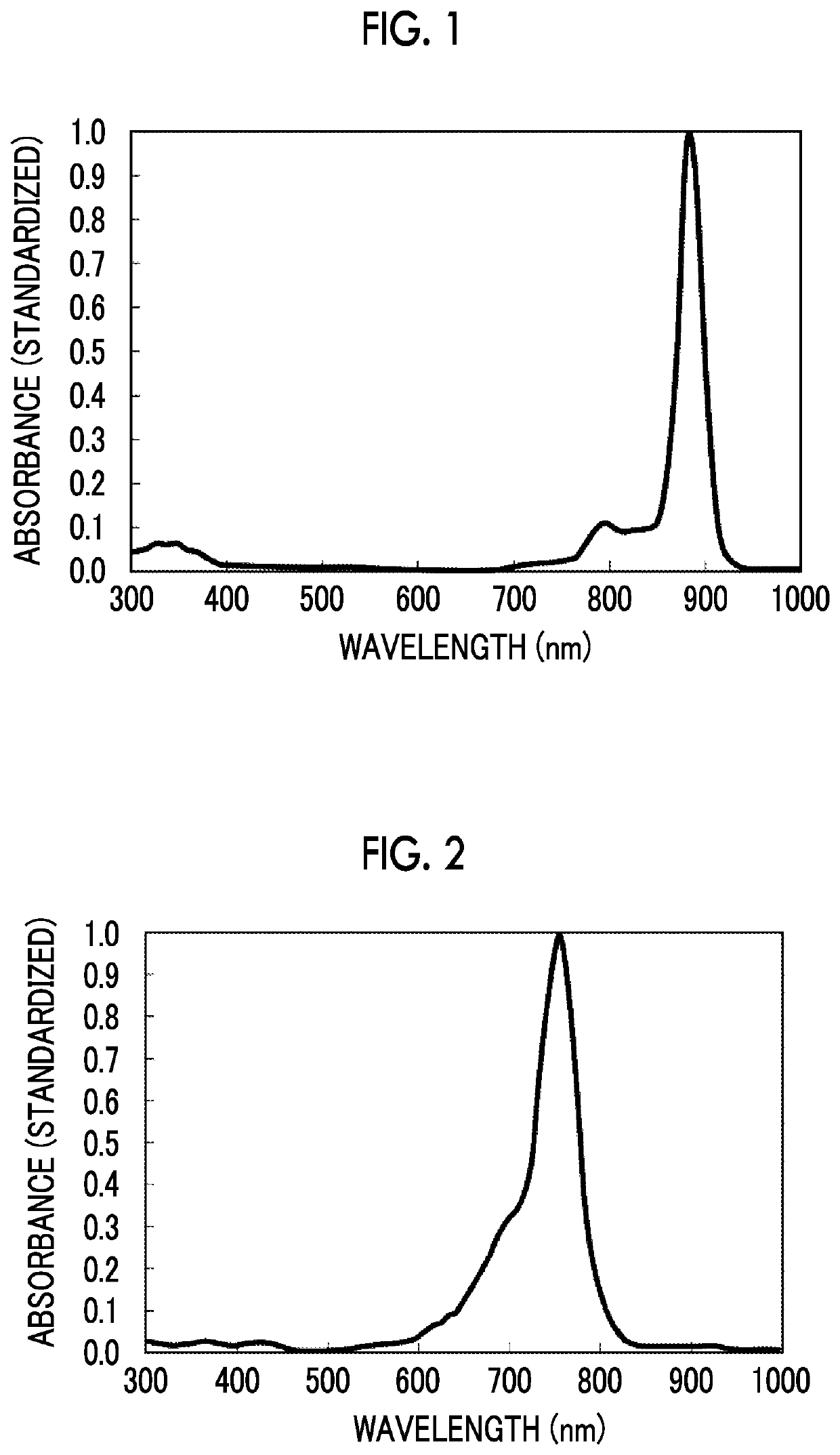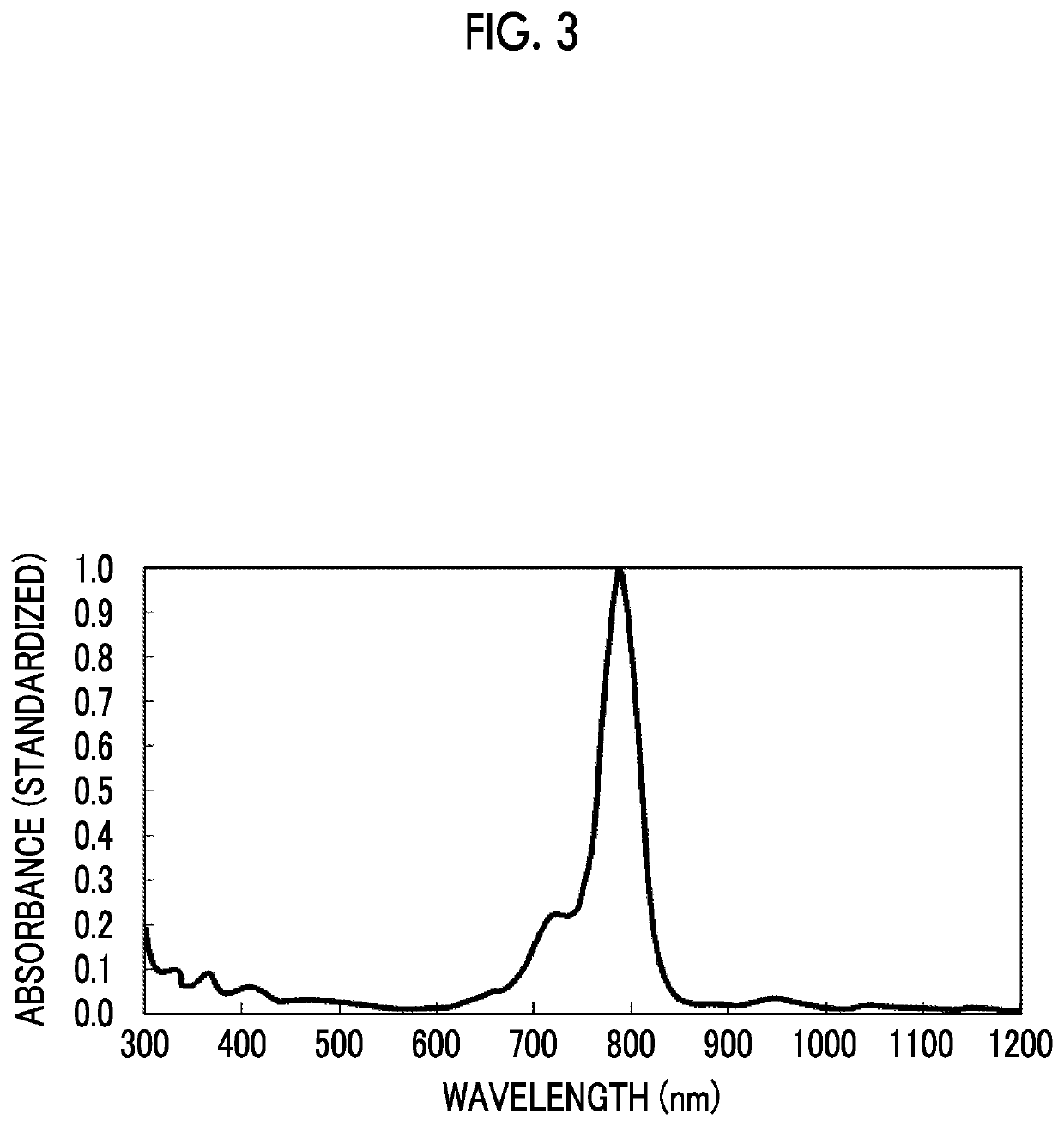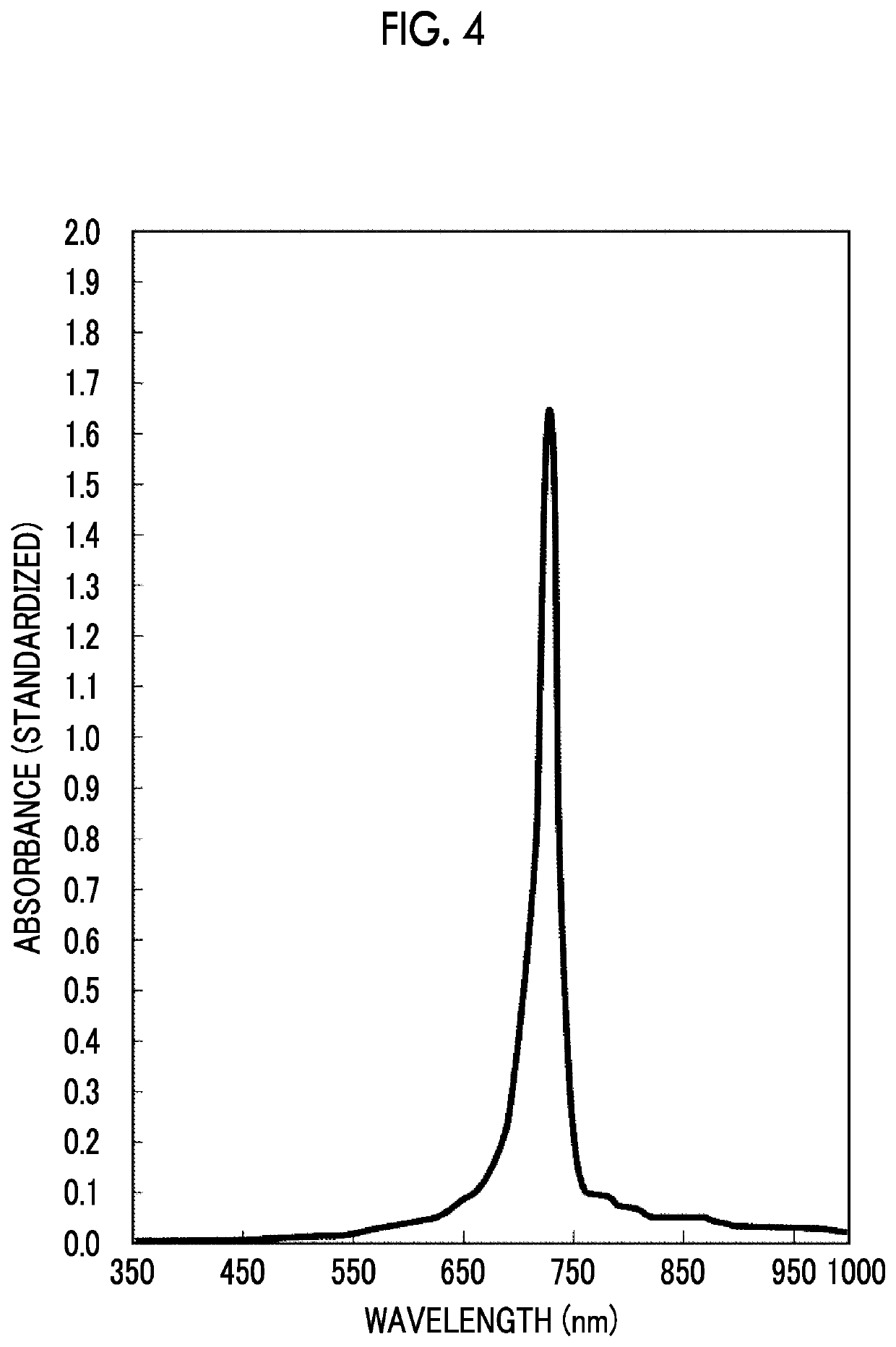Lens for spectacles and spectacles
a technology for spectacles and lenses, applied in the field of lenses for spectacles and spectacles, can solve the problems of inability to meet the resin requirements, decomposition and deterioration of coloring agents in long-term use, and not having good compatibility with resins
- Summary
- Abstract
- Description
- Claims
- Application Information
AI Technical Summary
Benefits of technology
Problems solved by technology
Method used
Image
Examples
example 1
[0278]100 parts by mass of MR-8 (registered trademark) [trade name, refractive index: 1.60, Mitsui Chemicals, Inc.] as a precursor monomer of a thiourethane resin, 0.05 parts by mass of the specific near-infrared absorbing agent D-1 described above, and 0.01 parts by mass of dibutyltin dichloride as a polymerization catalyst were mixed so as to obtain a resin composition. The obtained resin composition was filled into a mold and then was heated at 130° C. for two hours to be cured, such that a lens for spectacles having a thickness of 2 mm was produced. Visual observation confirmed that the produced lens for spectacles was transparent.
[0279]FIG. 1 is a graph showing the absorption spectrum of the pyrrolopyrrole coloring agent (D-1), which is the specific near-infrared absorbing agent used in Example 1, obtained by the device described above. As shown in FIG. 1, it can be seen that the specific near-infrared absorbing agent (D-1) shows a steep maximum absorption peak near the wavelen...
example 2
[0280]100 parts by mass of MR-7 (registered trademark) [trade name, refractive index: 1.67, Mitsui Chemicals, Inc.] as a precursor monomer of a thiourethane resin, 0.05 parts by mass of the specific near-infrared absorbing agent D-1 described above, and 0.01 parts by mass of dibutyltin dichloride as a polymerization catalyst were mixed so as to obtain a resin composition. The obtained resin composition was filled into a mold and then was heated at 130° C. for two hours to be cured, such that a lens for spectacles having a thickness of 2 mm was produced. Visual observation confirmed that the produced lens for spectacles was transparent.
example 3
[0281]100 parts by mass of MR-7 (registered trademark) [trade name, refractive index: 1.67, Mitsui Chemicals, Inc.] as a precursor monomer of a thiourethane resin, 0.05 parts by mass of the specific near-infrared absorbing agent D-28 described above, and 0.01 parts by mass of dibutyltin dichloride as a polymerization catalyst were mixed so as to obtain a resin composition. The obtained resin composition was filled into a mold and then was heated at 130° C. for two hours to be cured, such that a lens for spectacles having a thickness of 2 mm was produced. Visual observation confirmed that the produced lens for spectacles was transparent.
PUM
| Property | Measurement | Unit |
|---|---|---|
| transmittance | aaaaa | aaaaa |
| transmittance | aaaaa | aaaaa |
| wavelength | aaaaa | aaaaa |
Abstract
Description
Claims
Application Information
 Login to View More
Login to View More - R&D
- Intellectual Property
- Life Sciences
- Materials
- Tech Scout
- Unparalleled Data Quality
- Higher Quality Content
- 60% Fewer Hallucinations
Browse by: Latest US Patents, China's latest patents, Technical Efficacy Thesaurus, Application Domain, Technology Topic, Popular Technical Reports.
© 2025 PatSnap. All rights reserved.Legal|Privacy policy|Modern Slavery Act Transparency Statement|Sitemap|About US| Contact US: help@patsnap.com



